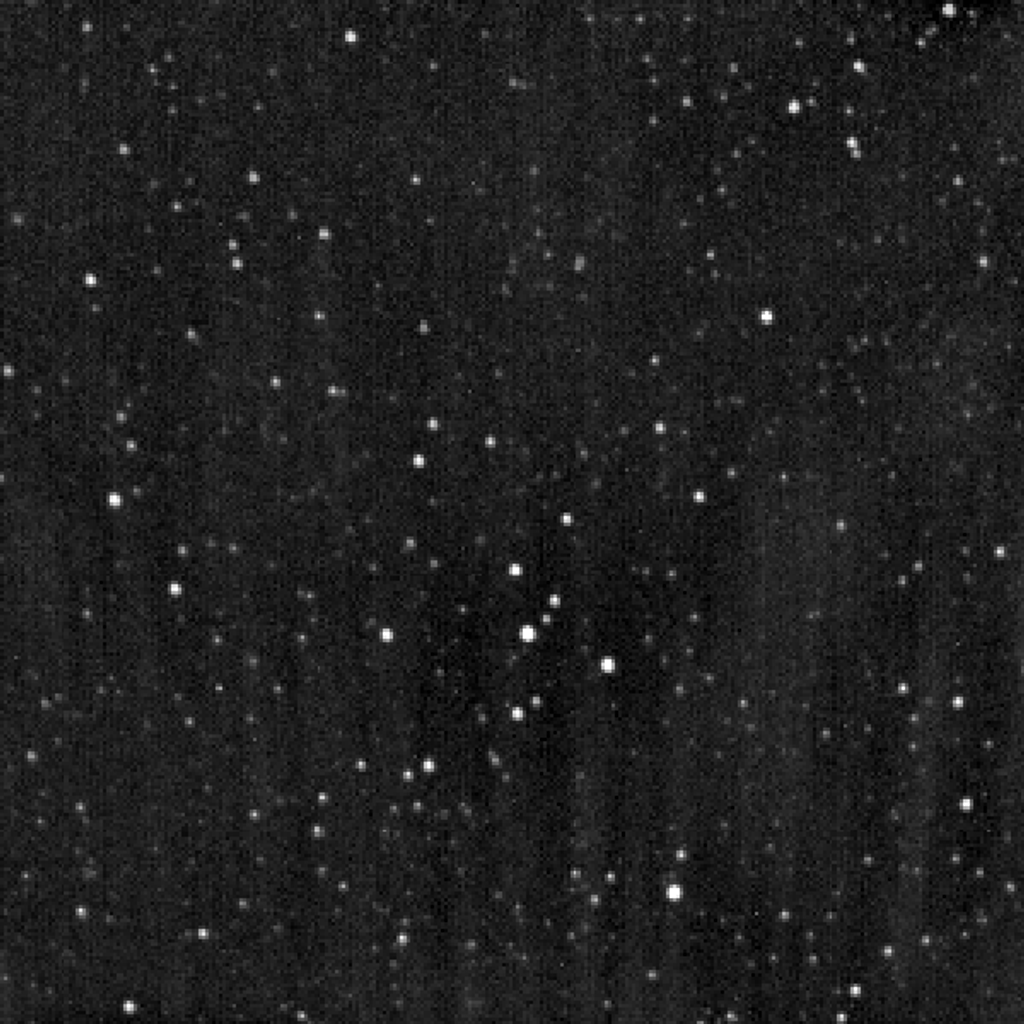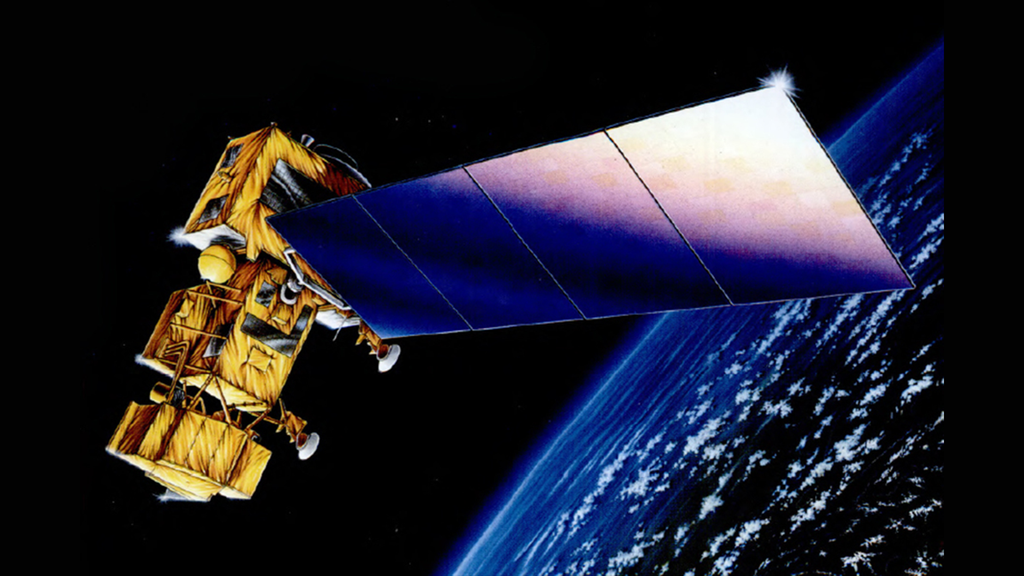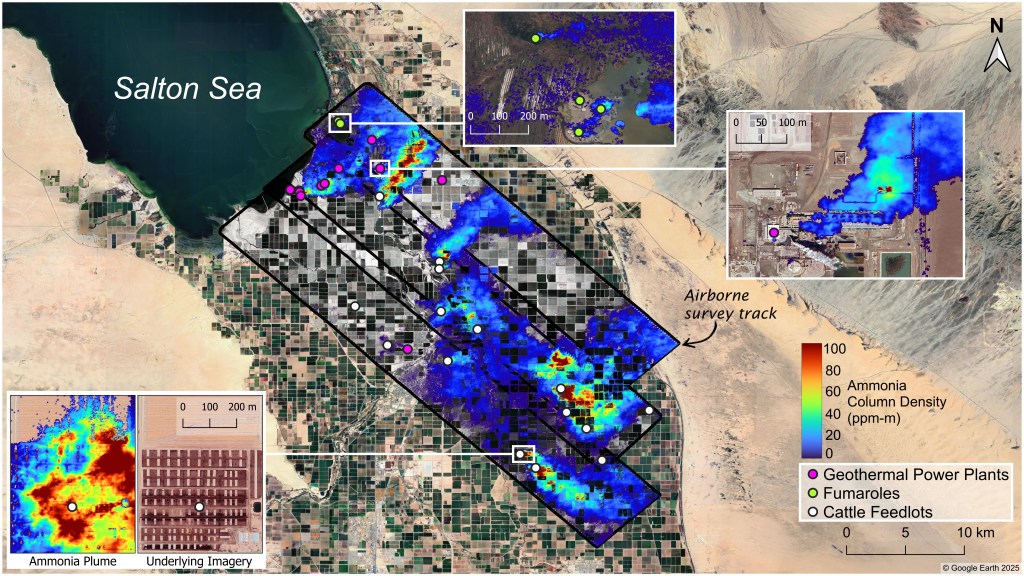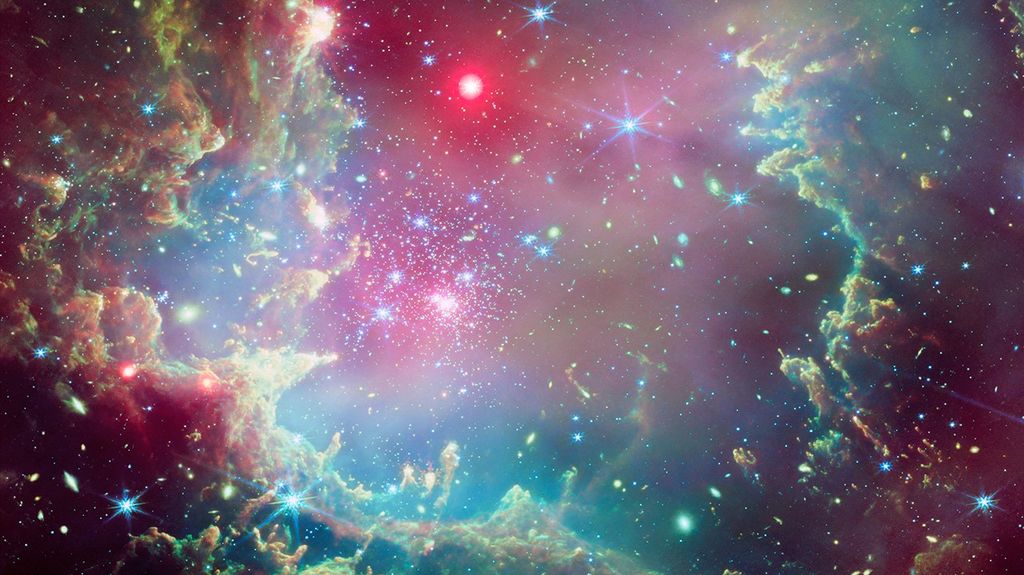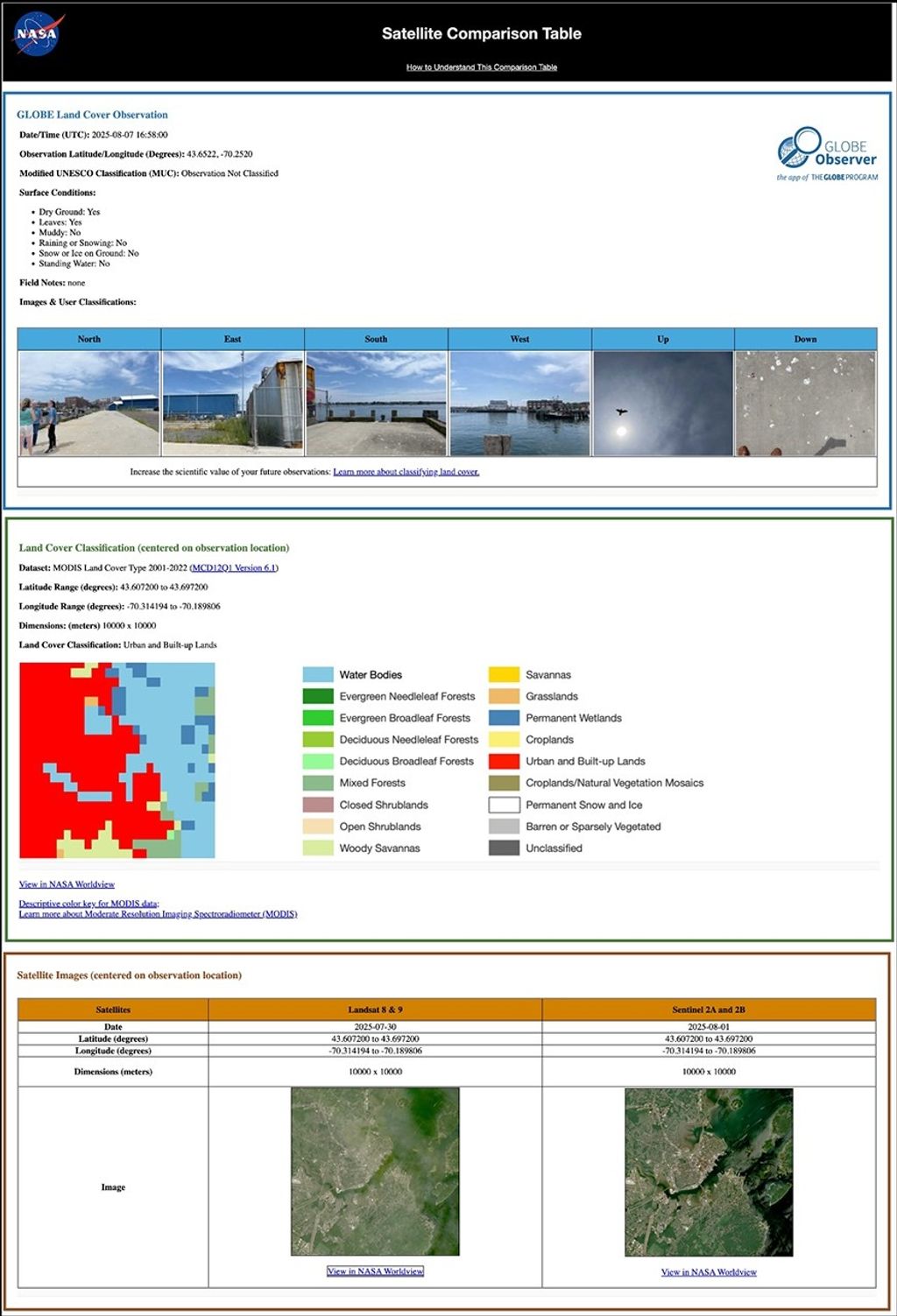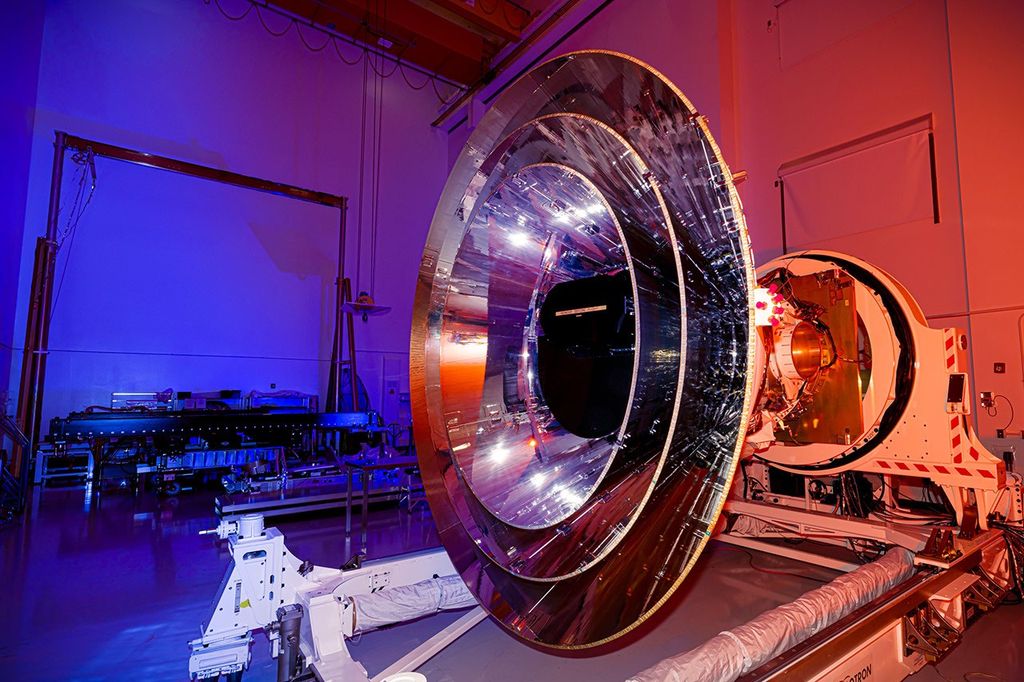1 min read
Star-Forming Region LH 95 in the Large Magellanic Cloud

Swirls of gas and dust reside in this ethereal-looking region of star formation imaged by NASA's Hubble Space Telescope. This majestic view, located in the Large Magellanic Cloud (LMC), reveals a region where low-mass, infant stars and their much more massive stellar neighbors reside. A shroud of blue haze gently lingers amid the stars.
Known as LH 95, this is just one of the hundreds of star-forming systems, called associations, located in the LMC some 160,000 light-years distant. Earlier ground-based observations of such systems had only allowed astronomers to study the bright blue giant stars present in these regions. With Hubble's resolution, the low-mass stars can now be analyzed, which will allow for a more accurate calculation of their ages and masses.
This detailed view of the star-forming association LH 95 was taken with Hubble's Advanced Camera for Surveys and provides an extraordinarily rich sample of newly formed low-mass stars. The LMC is a galaxy with relatively small amounts of elements heavier than hydrogen, giving astronomers an insight into star formation in environments different than our Milky Way.
The largest stars within LH 95 - those with at least three times the mass of the Sun - generate strong stellar winds and high levels of ultraviolet radiation that heat the surrounding interstellar gas. The result is a bluish nebula of glowing hydrogen that continues to expand out into the molecular cloud that originally collapsed to form these massive stars.
Some dense parts of this star-forming region are intact despite the stellar winds, and can still be seen as dark dusty filaments in the picture. Such dust lanes absorb parts of the blue light from the stars behind them, making them appear redder. Other parts of the molecular cloud have already contracted to turn into glowing groups of infant stars, the fainter of which have a high tendency to cluster. This deep Hubble image also reveals several large spiral and distant galaxies decorating the background of LH 95.
This image of LH 95 is a composite of two filters that localize visible (V) and infrared (I) light. Because of the color assignments chosen, ionized hydrogen, which is visible within the V filter, appears bluish. The choice of color assignment helps to distinguish hot bright blue stars from cooler, less luminous red stars.
About the Object
- R.A. PositionR.A. PositionRight ascension – analogous to longitude – is one component of an object's position.05h 37m 4.36s
- Dec. PositionDec. PositionDeclination – analogous to latitude – is one component of an object's position.-66° 22' 1.59"
- ConstellationConstellationOne of 88 recognized regions of the celestial sphere in which the object appears.Dorado
- DistanceDistanceThe physical distance from Earth to the astronomical object. Distances within our solar system are usually measured in Astronomical Units (AU). Distances between stars are usually measured in light-years. Interstellar distances can also be measured in parsecs.Approximately 160,000 light-years (50 kiloparsecs)
- DimensionsDimensionsThe physical size of the object or the apparent angle it subtends on the sky.This image is 3 arcminutes (140 light-years or 45 parsecs) across.
About the Data
- Data DescriptionData DescriptionProposal: A description of the observations, their scientific justification, and the links to the data available in the science archive.
Science Team: The astronomers who planned the observations and analyzed the data. "PI" refers to the Principal Investigator.This image was created from HST data from the following proposal 10566: D. Gouliermis, W. Brandner, and T. Henning (Max Planck Institute for Astronomy, Heidelberg), A. Dolphin (Steward Observatory), M. Rosa (European Southern Observatory), and B. Brandl (Leiden Observatory). - InstrumentInstrumentThe science instrument used to produce the data.HST>ACS/WFC
- Exposure DatesExposure DatesThe date(s) that the telescope made its observations and the total exposure time.March, 2006
- FiltersFiltersThe camera filters that were used in the science observations.F555W (V) and F814W (I)
- Object NameObject NameA name or catalog number that astronomers use to identify an astronomical object.LH 95
- Object DescriptionObject DescriptionThe type of astronomical object.Star-Forming Region in the Large Magellanic Cloud
- Release DateDecember 19, 2006
- Science ReleaseCelestial Season’s Greetings from Hubble
- Credit

This image is a composite of many separate exposures made by the ACS instrument on the Hubble Space Telescope using several different filters. Two filters were used to sample broad wavelength ranges. The color results from assigning different hues (colors) to each monochromatic image. In this case, the assigned colors are: Blue: F555W (V) Green: F555W (V) + F814W (I) Red: F814W (I)
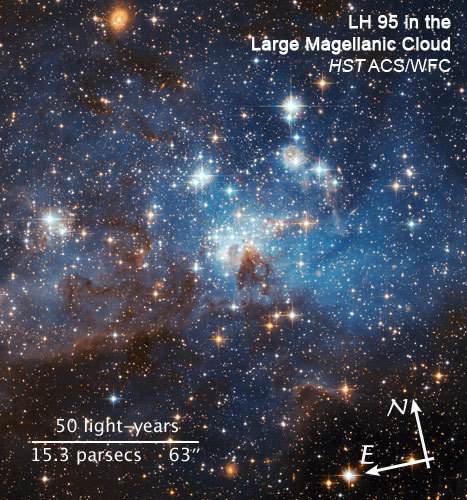
Share
Details
Claire Andreoli
NASA’s Goddard Space Flight Center
Greenbelt, Maryland
claire.andreoli@nasa.gov






